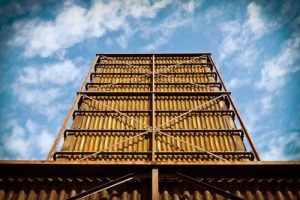
From automotive and aerial vehicles to medical equipment, roofs and more, sheet metal has countless applications. As a result, the sheet metal manufacturing industry is thriving. According to the Bureau of Labor Statistics (BLS), the number of workers employed in the sheet metal industry is expected to grow by 9% through 2026. In 2016, roughly 139,000 workers were employed in the industry. Within the next seven years, however, the BLS expects over 150,000 workers to be employed in the sheet metal industry.
Workers use a variety of tools to form and finish raw metal into sheet metal, one of the most important being a rolling machine. What is a rolling machine, and what role does it play in sheet metal production?
Overview of Rolling Machines
A rolling machine is a piece of manufacturing equipment that contains two or more rollers through which raw metal is fed. The purpose of rolling machines is to compress raw metal into a thinner and more uniform shape, which is essential when producing sheet metal. They feature at least one pair of rollers that compress the raw material as it’s fed. When the metal comes out of the rollers, it has a thinner and more uniform shape.
Rolling machines have been around for centuries. According to Wikipedia, the world’s first rolling machine was invented by Henry Cort in the mid- to late 1700s. While Cort’s design was very basic, it allows steel mills to produce 1,500% more metal than before.
The Steps to Producing Sheet Metal
To produce sheet metal, metalworking companies first heat up the raw metal in a large furnace. Once the metal has achieved a molten state, a worker pours the liquefied metal into an a thin ingot-shaped mold and allowed to cool.
Next, a worker feeds the ingot through the rollers of a rolling machine. Each pair of rollers compresses the ingot, allowing for a thinner and more uniform shape.
After the metal has been rolled, it’s often annealed. This involves heating the metal back up and allowing it to cool. The purpose of annealing is to remove stresses and, therefore, increase the strength and durability of the metal.
Rolling Machines: Beyond Sheet Metal Production
While rolling machines are most commonly associated with sheet metal production, they are used in other metalworking applications. For example, a rolling machine can bend raw metal to achieve unique shapes. By definition, however, rolling machines — when used in the context of metalworking — are machines that contain one or more pairs of rollers to manipulate raw metal.
